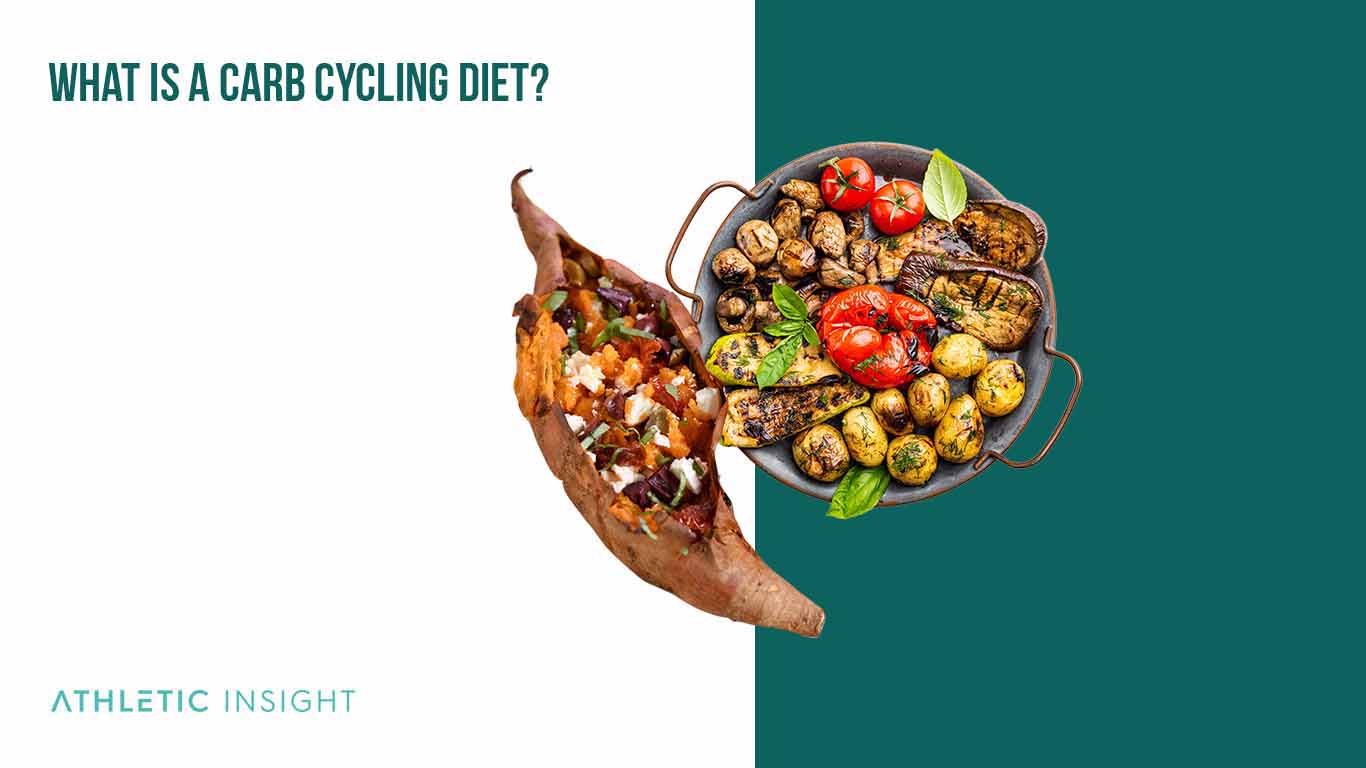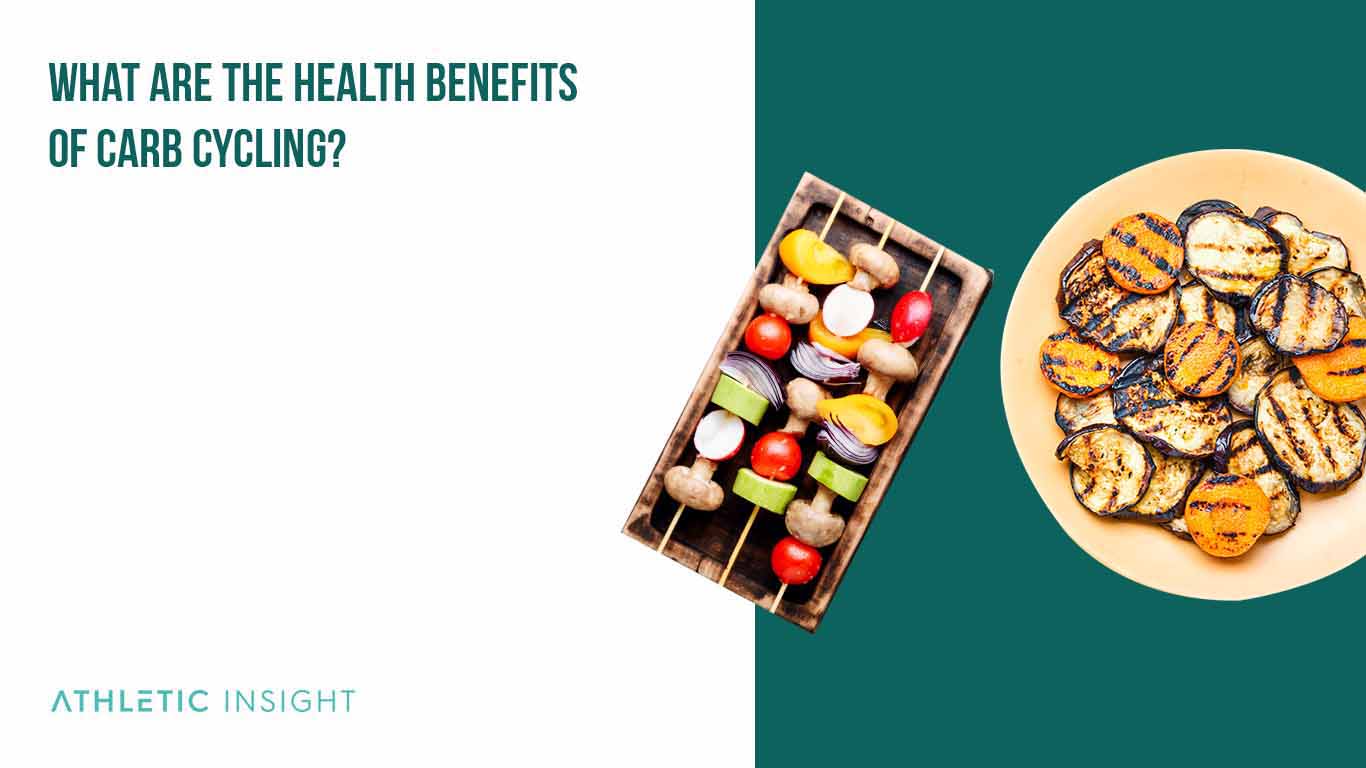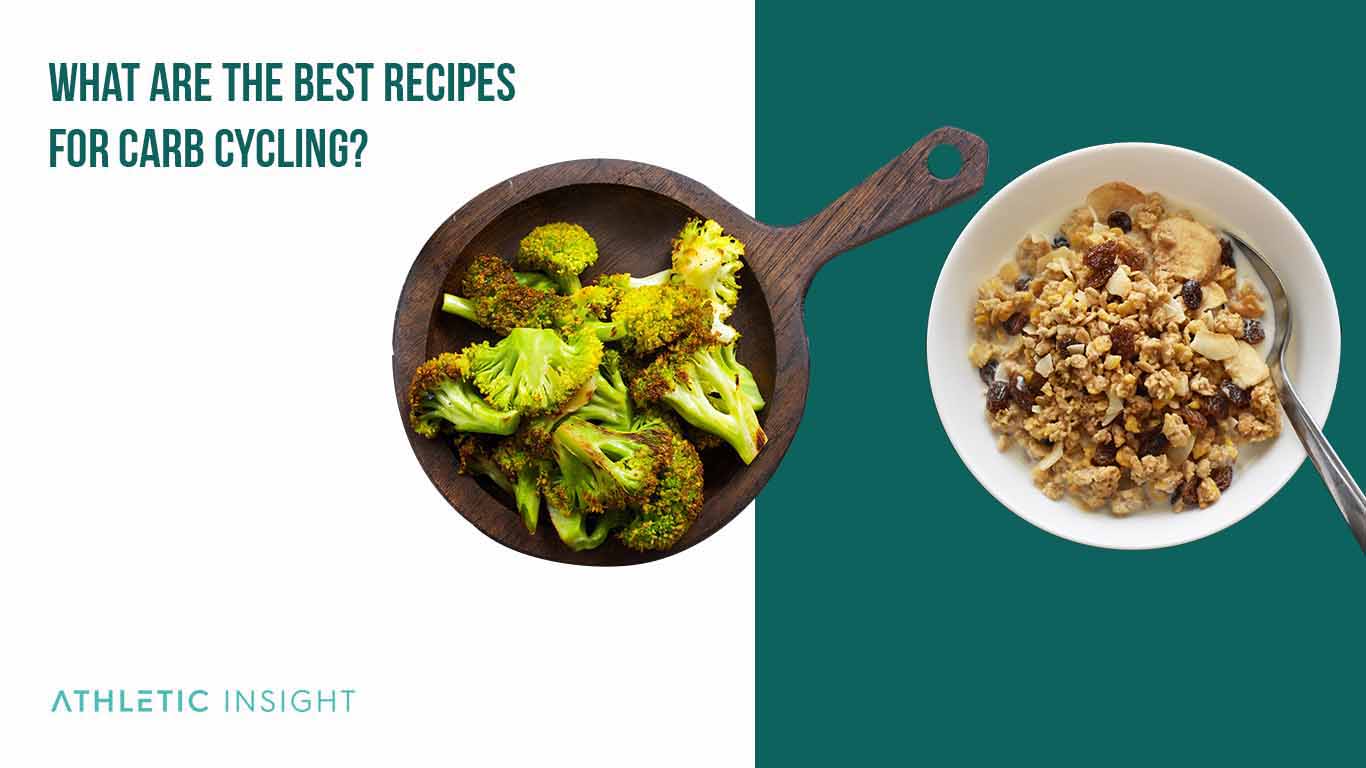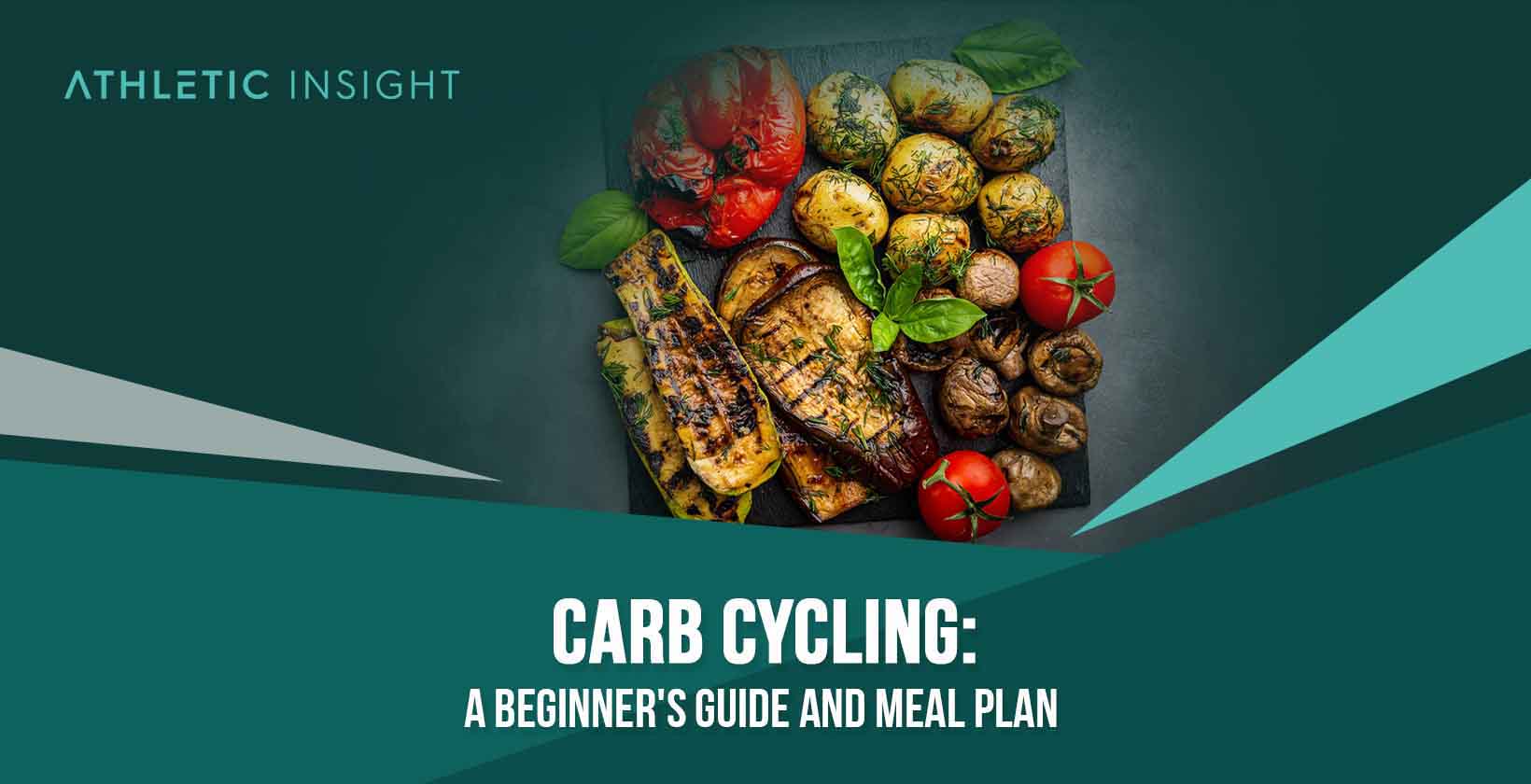Carbohydrate cycling is a diet that cycles between high-carbohydrate and low-carbohydrate days. Individuals adopt the carb cycling diet to increase energy, lose body fat, or to develop muscle.
To start the carb cycle diet, you must first plan your meals and establish your daily calorie requirements. Adhere to your plan and supplement your diet with vitamins, minerals, and vital fatty acids once you have established one.
Carb cycling improves energy levels, increases muscle mass, and decreases body fat, which are all beneficial to health. Yet, it is important to realize that carb cycling can be difficult to sustain if you do not know how to do it properly. If you have any issues about carb cycling or your overall nutritional needs, you must speak with a trained nutritionist or dietician.
According to studies, carb cycling may be an efficient method for attaining a number of health and fitness objectives. It reduces body fat, increases lean muscular mass, and boosts energy levels. Many also believe that carb cycling can be beneficial for individuals with diabetes and metabolic syndrome. Both high-carb and low-carb cycling diets are available.
What Is a Carb Cycling Diet?
Carb cycling, or the intermittent low-carb diet, is a type of diet that involves alternating between high and low-carb days to reach specific health and fitness goals. It follows the idea that consuming more carbs on certain days and fewer on other days can optimize your body’s metabolic rate and energy levels.

You can alternate these low and high-carb dates daily, weekly, or monthly. It is essential to adjust your carb cycling plan based on your goals. For example, if you are trying to lose weight, you may want to have more low-carb days than high-carb days.
Conversely, if you are trying to build muscle, you may want to have more high-carb days than low-carb days. Many bodybuilders follow this diet plan and can often be seen consuming large quantities of high carb foods like pancakes.
Carbohydrates are essential for energy and are the body’s primary fuel source. When you consume carbohydrates, your body uses them to create glycogen in the muscles. When you consume fewer carbs, your body turns to stored fat for energy instead of glycogen.
How Does Carb Cycling Work?
Carb cycling is a new approach to diet and health that follows the idea that you can manipulate your body’s metabolism by consuming different types and amounts of carbohydrates.
The concept behind this type of diet is that you can match your body’s needs for calories and glucose. You give your body the fuel to perform and recover on high-carb days. The low-carb days allow your body to burn off stored fat and excess energy.
By adjusting your carbohydrate intake, you can also improve your insulin sensitivity, which means that your body will be more effective at using carbs for energy instead of storing them as fat.
By constantly adjusting how many carbs you are eating, you can maximize the benefits of eating carbs while also training your body to burn fat as an energy source.
What Are the Factors That Affect Carb Intake?
One of the most critical parts of this diet is adjusting the carb intake based on your goals and dietary needs. Several factors can impact carb intake such as body composition, training and rest days, health conditions, the type of training, and the amount of body fat.
- Body Composition: Your body composition can affect how much carbs you need to consume. If you are trying to lose weight, you will likely want to consume fewer carbs than if you are trying to build muscle.
- Training and Rest Days: Your activity level can also impact carb intake. If you have an active lifestyle, you may need more carbs than someone who is sedentary.
- Health Conditions: If you have any health conditions, such as diabetes or metabolic syndrome, you may need to adjust your carb intake.
- The type of Training: Additionally, if you are doing a lot of resistance training or intense exercise, you may need more carbs to help your body recover.
- Amount of Body Fat: Finally, if you have a lot of body fat, you may need fewer carbs to reach your goals.
It’s critical to consult with a qualified nutritionist or dietician when planning your carb-cycling meals.
What Are the Health Benefits of Carb Cycling?
There are a variety of benefits to carb cycling such as muscle growth, athletic performance, fat loss, improved insulin sensitivity, improved cholesterol, and improved metabolic health.

- Muscle Growth: Carb cycling can help you build muscle and increase strength by providing your body with the fuel it needs to repair muscles after intense exercise.
- Athletic Performance: Carb cycling can help you improve athletic performance by providing your body with the energy required for intense workouts.
- Fat Loss: This diet can help you lose fat by allowing your body to use stored fat as an energy source.
- Improved Insulin Sensitivity: One of the most significant benefits of this diet is stronger insulin sensitivity. Improved insulin sensitivity means that your body can use carbs for energy instead of storing them as fat.
- Improved Cholesterol Levels: Carb cycling can also help improve your cholesterol levels by reducing bad cholesterol (LDL) and increasing good cholesterol (HDL).
- Improved Metabolic Health: Training your body when to burn fat vs. carbs helps to improve your overall metabolic health.
What Are the Health Risks of Carb Cycling?
There are some health risks associated with carb cycling such as trouble sleeping, constipation, kidney damage, electrolyte imbalance, nutrient deficiencies, bloating, tiredness and lethargy.
- Trouble Sleeping: This diet can cause difficulty sleeping due to the high carbohydrate intake on certain days.
- Constipation: If you are not getting enough fiber, this diet can cause constipation.
- Kidney Damage: High levels of protein and carbohydrates can cause kidney damage if you are not drinking enough water.
- Electrolyte Imbalance: Electrolyte imbalance can occur when cutting out carbs for extended periods.
- Nutrient Deficiencies: Cutting out entire food groups can lead to nutrient deficiencies, such as iron and zinc deficiency.
- Bloating: Consuming too many carbs can cause uncomfortable bloating.
- Tiredness and Lethargy: As your body adjusts to carb cycling, you may experience fatigue and lethargy.
How To Do Carb Cycling?
The concept of carb cycling is simple, on higher-carb days, you eat more carbohydrates and fewer fats; on lower-carb days, you do the opposite. This approach can be beneficial for a variety of reasons.
Higher-carb days help boost energy levels, replenish muscle glycogen stores to facilitate intense workouts, and help boost metabolism. Low-carb days allow the body to rest and burn fat more efficiently.
When starting a carb cycling diet, it is essential to understand the basics. First, it is crucial to determine your daily calorie needs and macronutrient ratios. Your macronutrient ratios will depend on your goals and activity level. Typically the higher-carb days should consist of 40 to 50% carbohydrates and 25 to 35% protein. Reverse these numbers on lower-carb days.
Next, you will need to plan your meals around these macronutrient ratios. On higher-carb days, focus on whole-grain carbohydrates such as oatmeal, brown rice, quinoa, and sweet potatoes. Opt for lean meats, eggs, or plant-based proteins for protein sources.
On lower-carb days, focus on low-glycemic carbohydrates such as green vegetables, beans, legumes, nuts, and seeds. For protein sources these days, opt for lean meats or plant-based proteins. You should be eating around 2000 calories per day on this diet.
Due to the rigidity of this diet and the importance of alternating between high and low-carb days, the most effective way to eat is on a meal plan. A meal plan will help you stay on track and get the right amount of macronutrients. While eating out on a meal plan may be challenging, you should cook most of your meals to ensure you meet your macros.
You can stay on the carb cycling diet for an extended amount of time. For your first time, you can try a 12-week version of this diet.
If you are implementing the carb cycling diet, there are some best practices to follow.
- Make sure you are consuming enough fiber on the lower-carb days.
- Drink plenty of water throughout your carb cycle to help your body flush out toxins.
- Ensure enough rest to help with muscle recovery and repair.
By using these tips, you can successfully carb cycle and improve your overall health and fitness.
How To Schedule Carb Cycling
The following table shows how you can schedule your carb cycling.

If you are new to carb cycling, a carb cycling calculator can help you calculate the right carb cycling schedule for your diet and exercise needs by taking into account your goals and exercise routine.
What Are the Foods That You Can Eat While on a Carb Cycling?
This carb cycling diet food list covers many of the foods you can eat while on this diet.
- Complex Carbohydrates: oatmeal, brown rice, quinoa, buckwheat, whole-wheat bread, and sweet potatoes
- Lean Proteins: chicken, turkey, eggs, and fish
- Healthy Fats: Avocado, nuts and seeds, butter, and olive oil
- Non-Starchy Vegetables: broccoli, cauliflower, green beans
- Dairy: Yogurt and cottage cheese
What Are the Foods That You Should Avoid While on a Carb Cycling?
It is important to limit certain foods while carb cycling. These types of food can cause weight gain and inflammation and hinder your progress.
- Processed Sugars
- Highly-Processed Foods
- Trans Fats
- Alcohol
- Sugary Drinks
- High-Fat Dairy Products
Who Should Do Carb Cycling?
Carb cycling can benefit anyone looking to improve their body composition and overall health. However, due to the intensity and rigidity of this diet, it is not optimal for people looking for more everyday diet and fitness solutions.
Carb cycling can benefit casual dieters looking to lose weight, but it is not necessary for success. Other diets, such as calorie-controlled, Mediterranean, and Paleo, are less intense and more accessible to implement than carb cycling.
The carb cycling diet is ideal for athletes and bodybuilders who have the time and dedication to commit to long periods of carb cycling. Teaching your body to burn fat and matching your diet with your exercise/competitions is practical and beneficial for athletes because it helps them perform better.
Carb cycling is also practical for those who have reached a plateau in their health and fitness goals and are looking for a new way to achieve their desired results.
What Are the Best Recipes for Carb Cycling?
These recipes for carb cycling can help make meal planning easier.

- Peanut Butter Banana Smoothie: This breakfast smoothie has lots of protein.
- Turkey Deli Wrap: This deli wrap is an excellent option for low-carb days.
- Greek Salad with Grilled Chicken: This salad is an excellent option for higher-carb days.
- Baked Salmon and Sweet Potato Fries: Sweet potatoes are a great substitute on low-carb days.
- Lentil Soup: This soup is easy to get fiber and protein on moderate-carb days.
What Is a Sample Carb Cycling Plan?
This sample carb cycling meal plan gives you an idea of what you will eat in a week on this diet. You can repeat it as a 12-week carb cycling meal plan or find different meals to spice things up.
Day 1 – High Carb
- Breakfast: Three large eggs with whole wheat toast and fruit
- Lunch: Canned tuna with crackers and celery
- Dinner: Grilled chicken breast with brown rice and vegetables
Day 2 – High Carb
- Breakfast: Peanut butter banana smoothie
- Lunch: Turkey deli wrap
- Dinner: Baked fish with potatoes and vegetables
Day 3 – Low Carb
- Breakfast: three large eggs with avocado and tomato
- Lunch: Greek salad with grilled chicken
- Dinner: Salmon and sweet potatoes with green beans
Day 4 – High Carb
- Breakfast: Waffles with syrup and berries
- Lunch: Lentil soup and whole grain bread
- Dinner: Cheeseburger
Day 5 – High Carb
- Breakfast: Scrambled eggs and oatmeal
- Lunch: Grilled chicken pita
- Dinner: Grilled chicken with pasta and tomato sauce
Day 6 – Low Carb
- Breakfast: Cottage cheese and fruit
- Lunch: Spring salad with berries and grilled chicken
- Dinner: Turkey tetrazzini
Day 7 – Low Carb
- Breakfast: Fruit smoothie
- Lunch: Roastbeef deli wrap
- Dinner: Grilled fish with mashed cauliflower
What Are the Facts About Carb Cycling?
You should know some facts about carb cycling, including what happens the first week, the benefits, the length of the diet, scientific research, and the cost.
- First Week: The first week of carb cycling is the most difficult. Your body will adjust to the fluctuating carb intake, and you may experience hunger, fatigue, and cravings.
- Benefits: Carb cycling provides energy and increases fat loss, muscle growth, and overall health.
- Length of the Diet: The carb-cycling diet typically lasts between six and eight weeks. However, some experienced athletes may cycle for more extended periods.
- Scientific Research: Researchers have conducted numerous studies on carb cycling and its benefits.
- Cost: Implementing a carb-cycling diet is generally not expensive. You may need to invest in some fresh foods, but you can buy many of the ingredients on a budget.
How Long Does It Take To See Results from Carb Cycling?
Results from carb cycling may not be immediate. It takes time to adjust to the diet and for your body to reach its desired results. Generally, you can expect results within four weeks of starting the diet.
Is Carb Cycling Considered a Healthy Diet?
Yes, carb cycling is a safe and healthy way to lose weight, gain muscle mass, and improve overall health. People can tailor this diet to individual dietary needs, such as those with diabetes or food allergies, and can be used to reach any fitness goal.
Is Carb Cycling Good for Weight Loss?
Yes, carb cycling can be a great way to lose weight. You can use it to target fat loss and get leaner while still eating the foods you love. Carb cycling can help you lose weight because it forces your body to switch between burning carbs and fat for energy, which helps increase your metabolic rate and burn more calories.
What Is the Difference Between Carb Cycling Diet and Keto Diet?
Carb cycling is a diet that involves cycles of high and low-carb days, while the keto diet is a low-carb, high-fat diet. Carb cycling is a more flexible approach to eating that allows you to include both high and low-carb foods in your diet, while the keto diet requires you to eliminate all carbs from your meals.



